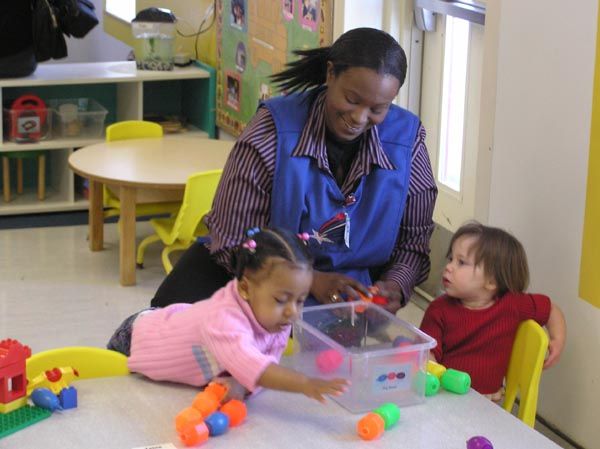Adaptation for Children’s Needs

Many child care providers work with children who have disabilities or special needs. Remember that children with special needs are children first, and have more similarities than differences from children without disabilities. Every child has a unique personality and special skills. Keep your primary focus on each child’s strengths and abilities as you work to make modifications and adjustments.
Making Adaptations to Include Children with Special Needs
Each child is different, and each delay or disability will require different modifications. Child care providers should gather as much information as you can about the child and the disability, and learn about typical modifications that can be made. The child’s parents and professionals who work with the child can be a tremendous resource. Don’t be afraid to ask questions or make suggestions.
Many of the adaptations that you make to your child care program will be simple. Often, the modifications will also benefit the other children in your child care program.
General Modifications to Accommodate Children with Special Needs
- Plan together. Parents, consultants, and caregivers need to set goals together. Ask to be a part of the team that develops and tracks the child’s Individualized Education Plan (IEP) so you can discuss activities, exercises, and supports needed to reach goals. Goals should be simple and should match the abilities of the child. Always discuss your ideas and plans with the family.
- Modify toys and equipment. Simple changes often can be made to regular toys. For example, you can help a child who has difficulty with stacking rings by simply removing every other ring. For a child who has difficulty holding a bottle, cover the bottle with a cloth sock so little hands can grasp it better.
- Make small changes in your child care environment. Slight adjustments in your child care environment may make the time that a child with special needs spends with you easier and more enjoyable for everyone. A quiet, private space for play may help an overactive child. A child with poor vision may benefit from an extra lamp in the play area. Removing a rug that slips will help a child who has trouble walking.
- Model appropriate behaviors. Children with special needs are sometimes timid about playing with others. You can show them how by being a play partner yourself. You might play a game with the child or pretend to go shopping together. As the child becomes more comfortable, you can invite other children to join your play activity.
- Teach specific words and skills that will show how to find a playmate and how to be a playmate. Learning how to look directly at another child when speaking or to say “May I play?” are big steps for some children.
- Teach typically developing children how to talk and play with children who have a disability. Talk to the children about what to do. For instance, gently touching the shoulder of a child with a hearing impairment or looking directly at him while talking are effective ways of getting that child’s attention.
- Look for strengths as well as needs. Avoid becoming too focused on a child’s disability. Treat each child as a whole person. Provide activities that will support a child’s strong points. Every child needs to feel successful and capable.
- Consult with parents, health care professionals, and early childhood specialists.Parents and specialists can provide specific information and suggestions for working with a child who has a disability. Do not be afraid to ask questions. Parents sometimes take it for granted that caregivers will know what to do.
